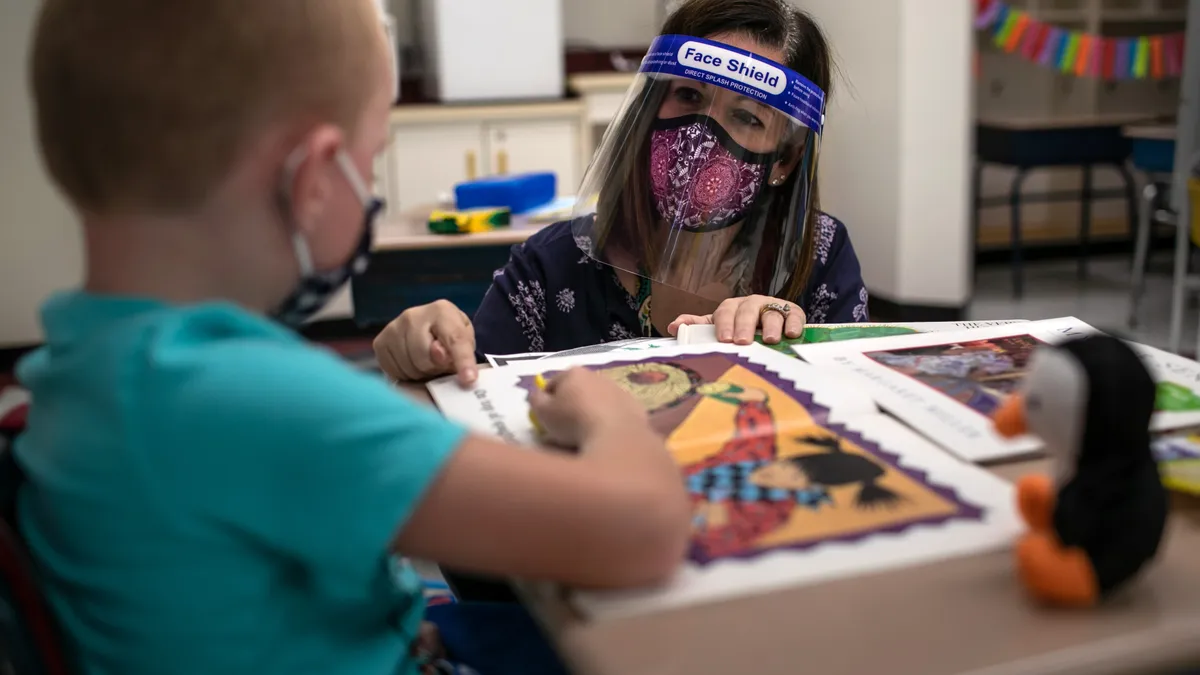Dive Brief:
-
While the pandemic has increased opportunities and enthusiasm for school systems to redesign approaches for academic and non-academic supports, the funding pressures and exhaustion weighing on educators and families are obstacles that will need to be addressed to effect long-sustaining change, participants in The State of the American School District virtual panel said Tuesday.
-
The expansion of virtual learning, 1:1 devices, high-dosage tutoring and attention to culturally responsive social-emotional supports are just a few positive initiatives on the rise during the pandemic, panelists said. Yet there are still opportunities left untapped, such as comprehensive partnerships with local organizations that can better bridge school-student-family relationships, they added.
-
Penny Schwinn, education commissioner of Tennessee, told attendees the pandemic has taught local and state school systems they can be flexible and innovative, but moving forward, those adaptations must be responsive to family and student needs. Lakisha Young, co-founder and CEO of The Oakland REACH, agreed, saying, “There’s no family that we’ve spoken to that wants to go back to normal.”
Dive Insight:
The panel was hosted by the Center on Reinventing Public Education, RAND Corporation and other organizations to discuss school systems’ pandemic experiences, including competing challenges they face and their problem-solving approaches.
Financial stability and student supports were among top priorities panelists discussed.
In a RAND survey conducted last summer of nearly 300 district superintendents, 71% reported a positive short-term budget outlook due to federal relief funding. About a third of respondents, however, predict a fiscal cliff when the spending timeline for relief funding ends. Urban districts were more likely to anticipate sizable drops in funding.
Merging the fiscal realities with the need for innovation is challenging but not impossible, Schwinn said. For example, in Tennessee, the state is creating opt-in student support programs and providing matching grants for activities such as high-dosage tutoring, professional development and free access to Advanced Placement courses.
“We do think that will pay off for both outcomes, as well as long-term financial sustainability for these programs if we can show that the investment and the return on investment really matters for kids,” Schwinn said.
The RAND survey also found non-academic services, such as technology and mental health programming, had noticeable growth during the pandemic. Survey respondents cited a need for additional staff, specifically substitute teachers, mental health professionals and paraprofessionals.
Kira Orange Jones, a member of the Louisiana State Board of Elementary and Secondary Education, said school systems run into tension as they respond to the need for more qualified school personnel while aiming to keep budgets balanced.
“We are faced with a unique opportunity to infuse a set of catalytic resources that are, in a sense, one-time resources into our system, systems plural, and yet, we recognize that is not going to happen in perpetuity,” she said.
That “human capital challenge,” Jones said, needs to be addressed through ongoing, sustainable solutions regarding competitive pay and retention initiatives.
Despite the obstacles, the panelists said they are optimistic for the future of education.
“I believe we're sort of coming to a moment in our educational system where people can agree that things need to change, that structures and systems need to be redefined and reinvented, and I think, therefore, there's a real opportunity to actually address those things,” Jones said.








 Dive Awards
Dive Awards






